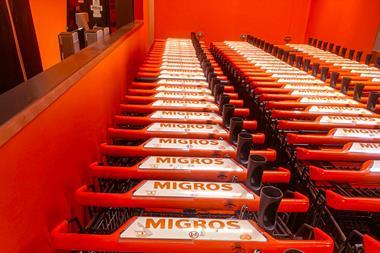The SFr16.8bn (e11.4bn) pension scheme of Swiss pharmaceutical giant, Novartis, holds real estate assets that comprise 12% of the fund’s assets.
Earlier this year, it completed a major transition in the approach to its property portfolio, which allowed the fund to maintain its exposure to this asset class, while enabling it to have holdings in a form that suited the scheme’s needs more precisely.
Traditionally, the largest part of Novartis’ real estate portfolio had been held in direct Swiss property investments, around half of these being located in the north west corner of Switzerland, in the Basel region where the parent company is based. The rest was well diversified in other Swiss urban centres. The properties were two thirds residential in nature, with the remainder in commercial and office spaces.
The fund decided that were considerable challenges posed in looking after direct real estate portfolios, particularly those invested in residential properties. The maintenance and upkeep aspects were proving to be very demanding on those responsible for the day-to-day administration of the fund and were adding an extra cost base to the fund.
Furthermore, the cost element was being added to by the smaller units of investment in residential compared with commercial investment. In summary, the Novartis scheme found its property allocations a considerable drain on its resources, particularly considering the size of the portfolio – some SFr1.5bn.
However, from a risk point of view, the valuations of directly held portfolios that are concentrated in a few regions and in property type tend move in the same direction, while liquidity issues mean that any attempts to dispose of assets can have a significant downward impact on values in a particular market. This posed a significant problem to the fund. One such issue was the psychological barrier to be overcome when a proportion of the group’s workforce is living in accommodation owned by the pension fund. Another stumbling block was the view often held by pension fund trustees that ‘bricks and mortar’ holdings are more substantial and real than an equity or a bond, which are often regarded as mere paper instruments.
Following an exploration of other options and after long internal discussions, the decision was finally taken to adopt a strategy that was more like the fund’s approach to other assets – a shift to indirect holdings.
The amount of organisation needed to transfer the fund’s real estate holdings into a range of real estate investment vehicles proved considerable. In what could be called a ‘multi-step’ operation, the pension fund ended up by investing in three tax efficient funds.
The fund now has its property portfolio on a much more diversified basis, but also in a much more liquid and manageable form, as it can switch between funds or even reduce its property exposure just by selling units in the funds. This is a degree of flexibility and a transaction friendly approach it never had previously.
Novartis’ commitment to property as an asset class has not diminished, it has just changed its form and enabled the fund to approach property in much the same way as it does other assets. There has been a considerable easing in the management time devoted to the area, though the more intensive management that property requires is paid for within the property funds’ structure, although this is shared with all the other investors participating.
The transaction took several months to go through and was completed successfully earlier this year. The pension fund has no direct holdings of property any longer, apart from a number of buildings that that will be sold off during the next two years.
The move, which was one of, if not the biggest transaction of this type seen in Switzerland, looks likely to encourage more pension funds to take this decisive step of moving from concrete to paper.













No comments yet